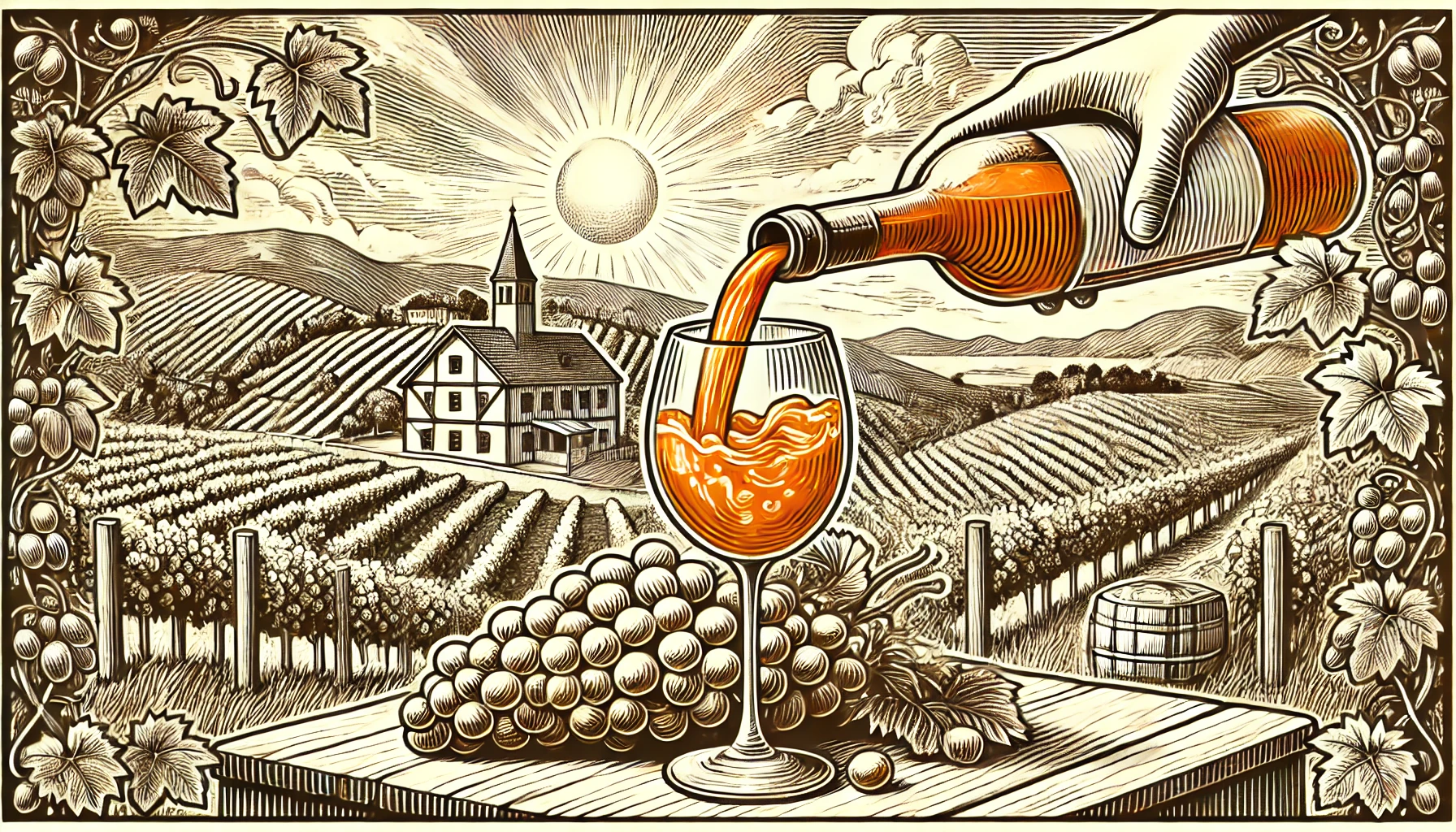
Orange wine offers a distinctive style that stands out in the wine world. Despite its name, orange wine doesn’t contain any oranges. Instead, it gets its color and unique character from white grapes that ferment with their skins. This skin-contact fermentation gives the wine its amber or orange hue, along with complex flavors and textures.
The process of making orange wine resembles red winemaking more than typical white winemaking. Winemakers crush white grapes and let the juice ferment with the grape skins and seeds. This extended contact between the juice and skins imparts tannins, structure, and a deeper color to the wine. As a result, orange wines often have a fuller body and a more pronounced texture compared to other white wines.
Flavor-wise, orange wines can vary widely, offering notes that range from dried fruit, nuts, and herbs to floral and citrus elements. They can also display a slight oxidative quality, adding another layer of complexity. Some orange wines might have a slight tannic grip, similar to red wines, making them a great pairing with a variety of foods, from roasted vegetables to rich cheeses.
Regions like Georgia, where winemakers have used clay vessels called qvevri for centuries, have a deep history of producing orange wines. Modern winemakers in Italy, Slovenia, and parts of the United States have embraced this ancient method, contributing to a resurgence of interest in orange wines worldwide.
Orange wine offers an exciting alternative for those looking to explore outside the traditional red, white, and rosé spectrum. Its rich history, combined with bold flavors and a striking appearance, makes it a fascinating choice for adventurous wine enthusiasts.
Curious about more wine terms and insights? Visit our Wine Wiki section and explore the basic wine terms for expert definitions and tips!
[…] If you’re curious to learn more about this style of wine, check out this detailed resource on orange wine. […]